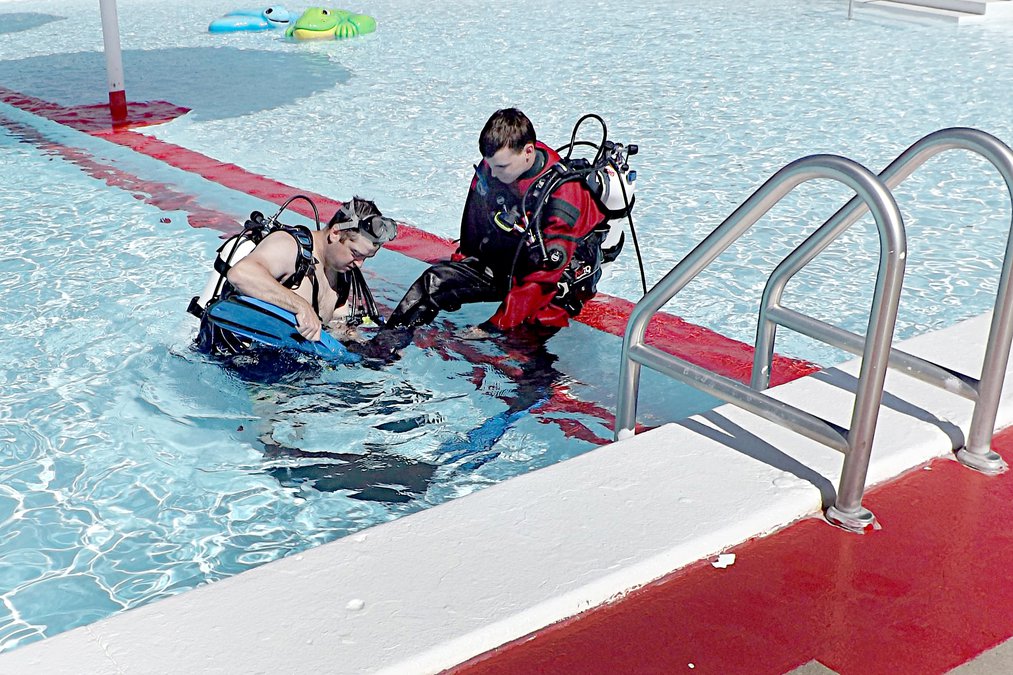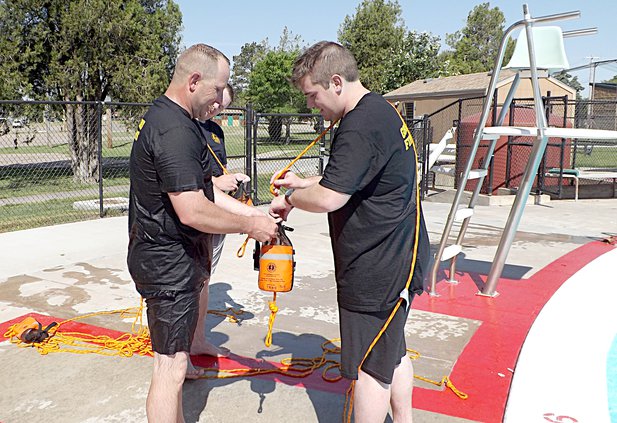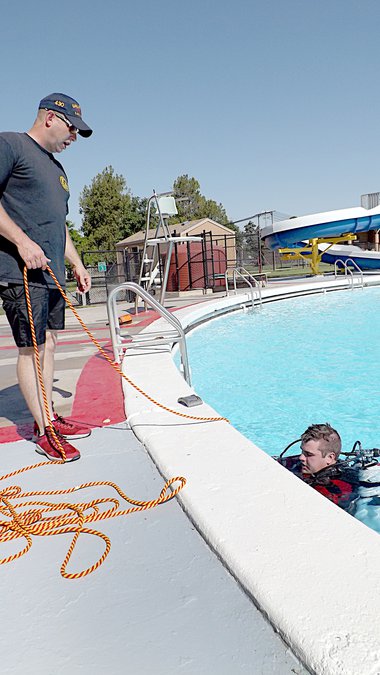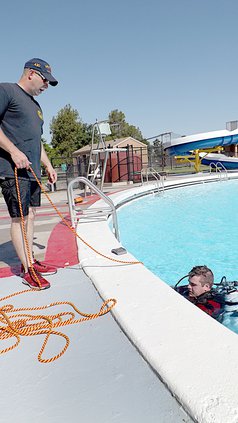As one of only a handful of trained rescue dive units in the western half of Kansas, Great Bend Fire Department search and rescue divers must be prepared for a variety of real-world scenarios.
The recently-filled pool at the Wetlands Waterpark in Great Bend and warm morning temperatures offered the team a controlled environment to hone their skills Wednesday morning. According to Great Bend Fire Chief Luke McCormick, the controlled-environment dive training at the pool is something the team does about once a year.
The 13-member dive team spent the morning training less experienced divers on underwater search-and-rescue techniques.
McCormick said one of the reasons the fire department uses the pool for dive training is because the clear water allows better visibility for training purposes. The real-world underwater environments they face are often limited, to often zero, visibility environments. So a clear body of water like the swimming pool helps the team hone their skills in an environment where real-time feedback is easier to provide.
“It gives us the ability to coach and teach them,” he said. “It’s hard to view when they’re in the zero-visibility water.”
Training at the pool also allows the team to test and to become accustomed to the drysuits used for cold-water dives and other gear they would use for an underwater search. The drysuits the team uses are loose-fitting, designed to be worn over clothes and to be sealed airtight to keep water out. They keep the wearer completely dry, which is important in many of the colder-water environments the team would work in. The team also uses high-end facemasks which allow for easier breathing and better visibility than traditional regulators they previously used.
McCormick praised the city for providing the high-quality equipment the team is able to use.
Once they have trained at the pool, McCormick said, the team will move to more real-world environments to train, something they do four to five times per year.
“We move out to the sandpits because that’s the reality of where we need to be,” he said. “Our jobs are going to be out in the rivers and the streams and the sandpits.”
The divers trained on a two-man back and forth technique in which an individual on shore, called a tender, stays in a fixed position while holding onto a rope to which the diver is attached. Because they cannot communicate verbally, the rope is what allows the diver to communicate with the tender on shore, and vise versa. It is marked in two-foot increments let out precisely so distance searched can be measured exactly and none of the search area is missed. In training, the diver is given a specific object placed on the pool bottom he must locate to practice the technique. In a real-world environment, McCormick said there would also be an additional individual on shore with the tender, documenting what areas had been searched and what had not.
In real-world application, the team not only searches for people, but has been brought in by law enforcement agencies to search for submerged vehicles, as well as disposed evidence such as cellphones and firearms. Because they are one of very few dive teams in western Kansas, they have worked with several different law enforcement agencies in the western half of the state.
The team also used the time at the pool Wednesday morning to train on throw bags, which are used in swift-current rescues. The bags are designed to be thrown from shore to give someone caught in a swift moving body of water something to grab onto so rescuers can pull them to shore.
Though they do not have to employ it often, McCormick said Wednesday’s training is crucial for his team in always being prepared.
“We’re thankful it’s been several years since we’ve had a drowning in the community, but we want to be prepped and ready to go in case there is one,” McCormick said.











